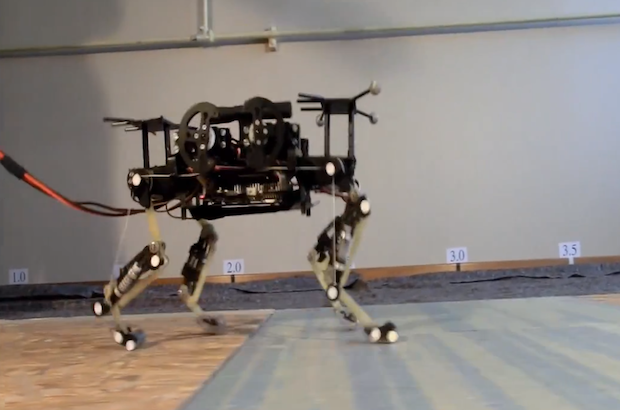
Developing walking gaits for multi-legged robots can be tricky. To solve the problem, many robots use a simple neural network called a Central Pattern Generator, or CPG, to produce rhythmic leg motion. The aim is to obtain robust locomotion patterns that exhibit stable limit cycles—periodic patterns that can resist perturbations. The robustness is obtained by providing feedback to the CPG from sensors in the legs or feet of the robot to compensate for irregularities and obstacles on the ground. It’s a bit like a simple cockroach that, despite its size, is quite capable of crawling over most any terrain.
In recent years researchers have developed a way to break down the CPG into what are called kinematic Motion Primitives (kMPs). With some work, the kMPs found in the walking gaits observed in animals can be adapted to robots with the same number of limbs—a kind of refined CPG.
via IEEE Spectrum






